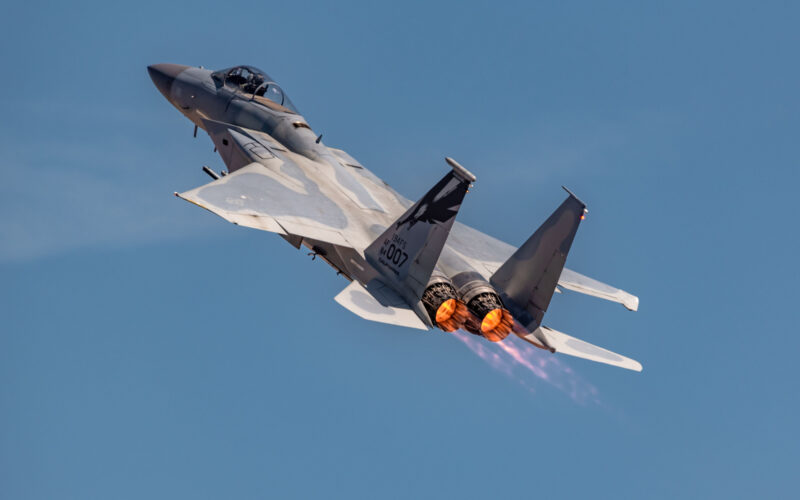The McDonnell Douglas F-15 Eagle, now known as the Boeing F-15 Eagle, stands as an enduring symbol of United States (US) air superiority. With over 100 victories and zero losses in aerial combat, it has earned its reputation as one of the most fearsome fighter jets in the US arsenal.
Here, we delve into its capabilities and explore the reasons behind the F-15’s enduring production since 1972, unpacking exactly what makes it so noteworthy.
Origins and development of F-15
The roots of the F-15 Eagle can be traced back to the late 1960s when the United States Air Force (USAF) sought a superior air-to-air fighter. In 1969, after evaluating various proposals, the USAF chose the design put forth by McDonnell Douglas.
This marked the birth of the F-15, an all-weather tactical fighter jet featuring twin engines and designed to outclass any potential adversary. It was one of the first fighter jets to be designed according to the air superiority doctrine (as opposed to interceptors) of the USAF.
The initial versions of the Eagle comprised the single-seat F-15 and the twin-seat training TF-15 variants. Following the maiden flight of the F-15C, the designations were renamed F-15A and F-15B. The aircraft were equipped with new Pratt & Whitney F100 engines, achieving a combat thrust-to-weight ratio exceeding 1:1 allowing them to pitch straight up while maintaining airspeed.
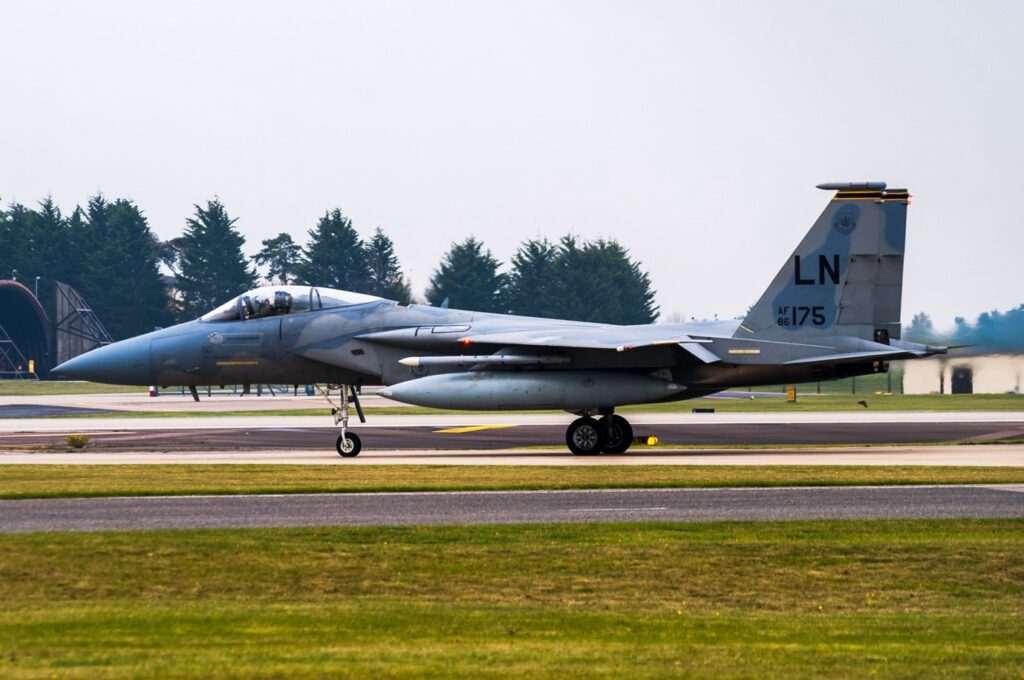
The inaugural flight of the F-15A took place on July 27, 1972, with the two-seat F-15B completing its maiden flight a year later. The aircraft entered service in January 1976.
Design and technology
The F-15 features a semi-monocoque fuselage constructed from all-metal materials, complemented by a substantial cantilever and shoulder-mounted wing. It can make sharp turns without losing speed because of its low weight-to-wing area ratio and a high thrust-to-weight ratio, making it highly maneuverable. The F-15 is also the fastest fighter jet in US service in terms of deployed aircraft.
It can ascend to 30,000 feet (9,100 meters) in approximately 60 seconds and fly for about 3,450 miles (5,550 kilometers) without refueling. When flying at specific speeds, the combined thrust of its dual engines exceeds the aircraft’s combat weight and drag, allowing it to accelerate vertically.
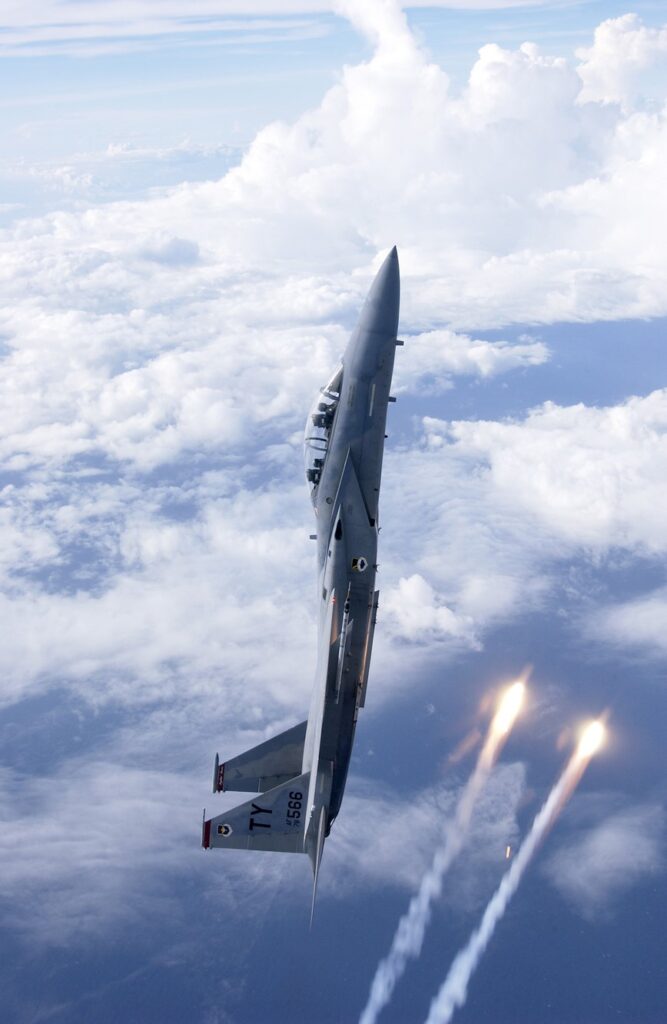
The F-15 is also equipped with a ‘look-down/shoot-down’ radar capable of distinguishing moving targets close to the ground amidst background noise. In contrast to the F-14 Tomcat or F-4 Phantom, the F-15 has a single canopy frame, providing the pilot with an unobstructed 360° field of view.
The F-15 even demonstrated its ability to maintain controlled flight with just one wing during a mid-air collision involving an Israeli F-15D in 1983. Despite losing most of the starboard wing, the pilot adapted swiftly, mastering the techniques required to fly and safely land the aircraft.
The F-15 comes with a versatile avionics system, featuring a head-up display (HUD), advanced radar, inertial guidance, flight instruments, high-frequency communications, and navigation systems. Additionally, it includes an internal electronic warfare system, friend-or-foe identification, electronic countermeasures, and a central digital computer.
The visible-in-any-light HUD display gives the pilot essential information for tracking and eliminating an enemy aircraft without the need to divert attention to cockpit instruments.
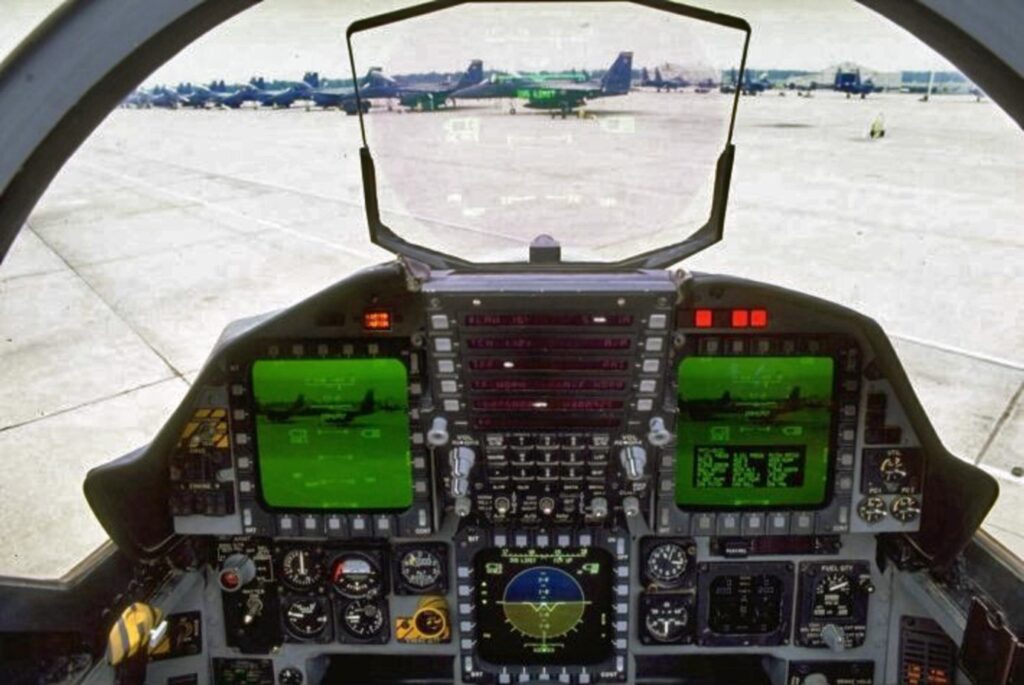
Operational history
One of the remarkable feats of the F-15 is its flawless combat record of 104 victories, never having lost a dogfight or been shot down in combat. The aircraft took part in the Gulf War during Operation Desert Shield and the Yemen Civil War. This unparalleled success has solidified its reputation as an air superiority juggernaut.
Despite the F-15 being primarily designed for the USAF, it was the Israeli Air Force (IAF) that made the most use of its capabilities. IAF ace Moshe Melnik achieved the first F-15 kill in 1979. In total, IAF pilots have achieved more than 50% of F-15 kills. Israel was also the first operator to develop and use the air-to-ground capabilities of the air-superiority F-15 variants, leveraging its extended range compared to other IAF aircraft.
An F-15 nicknamed ‘Celestial Eagle‘ made history on September 13, 1985, by destroying a satellite called Solwind P78-1. It was the first and only time a jet achieved an air-to-space kill.
The F-15 has continually adapted to contemporary challenges, maintaining relevance in modern conflicts. Its versatility has allowed it to evolve with advancements in technology, ensuring that it remains a critical asset in the ever-changing landscape of aerial warfare.
Variants and current operators
Here are the most significant variants of the F-15, both in terms of prominence and the number of aircraft built:
- F-15A: The single-seat all-weather air-superiority fighter version, of which 384 units were built between 1972 and 1979. Retired on 16 September 2009.
- F-15B: Built and retired together with F-15A. Two-seat training version with 61 units built.
- F-15C: Enhanced as a single-seat, all-weather air-superiority fighter version, a total of 483 units were manufactured between 1979 and 1985.
- F15D: Two-seat training version, 92 units built together with F15C.
- F-15J: Manufactured as a single-seat, all-weather air-superiority fighter version specifically for the Japan Air Self-Defense Force, a total of 139 units were built from 1981 to 1997.
- F-15E Strike Eagle: Developed as a two-seat, all-weather multirole strike version, equipped with additional fuel tanks. With over 500 F-15E and derivative variants manufactured since 1985, this model remains in active production.
The United States, Saudi Arabia, Japan, Israel, Qatar, South Korea, and Singapore continue to operate various above-mentioned F-15 variants.
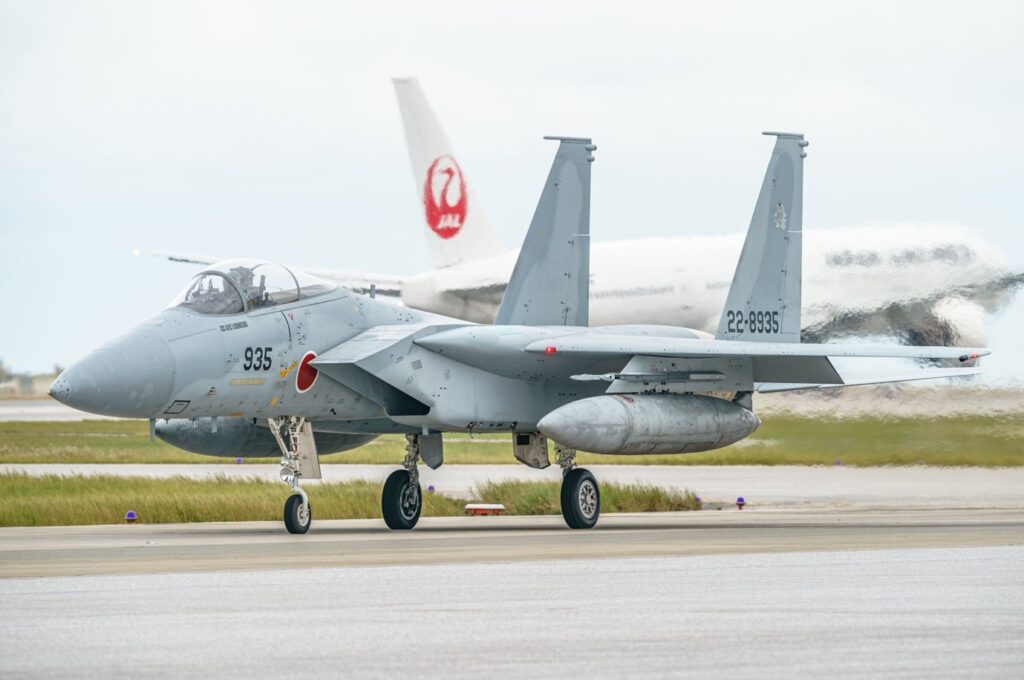
Note: This list excludes prototypes and research/test aircraft.
Specifications of F-15C
General:
| Specs | F-15C |
| Crew | 1 |
| Length | 63 ft 9 in (19.43 m) |
| Wingspan | 42 ft 10 in (13.06 m) |
| Height | 18 ft 6 in (5.64 m) |
| Max Takeoff Weight | 68,000 lb (30,844 kg) |
| Fuel Capacity | 13,455 lb (6,103 kg) internal |
| Powerplant | 2 × Pratt & Whitney F100-PW-220 afterburning turbofans |
| – Dry thrust: 14,590 lbf (64.9 kN) each | |
| – Thrust with afterburner: 23,770 lbf (105.7 kN) |
Performance:
| Specs | F-15C |
| Maximum Speed | Mach 2.5 (1,650 mph, 2,655 km/h) |
| Combat Range | 1,061 nmi (1,965 km) |
| Service Ceiling | 65,000 ft (19,812 m) |
| Armament | Guns: 1× 0.787 in (20 mm) M61 Vulcan 6-barrel rotary cannon Hardpoints: 9 Missiles: 4× AIM-7 Sparrow, 4× AIM-9 Sidewinder, 8× AIM-120 Advanced Medium-Range Air-to-Air Missiles |
Price
At the start of 2021, the USAF took delivery of its first pair of F-15EX fighter-bombers, a procurement initiated in mid-2020. Each aircraft was priced at $80 million, representing a more cost-effective option when compared to the F-35.
As of today, the estimated unit cost of the F-15EX is around $117 million.
Future ahead for the F-15
Despite over 50 years of active service since its introduction, the F-15 remains an integral part of the USAF and allied forces globally. Its enduring legacy is set to continue with the introduction of the F-15EX Eagle II version.
Enhancements for this comprise the AMBER (Advanced Missile and Bomb Ejector Rack) system that accommodates up to 22 air-to-air missiles, infrared search and track capabilities, advanced avionics, electronic warfare equipment, an AESA radar (active electronically scanned array), and a modified structure designed for a service life of 20,000 hours.
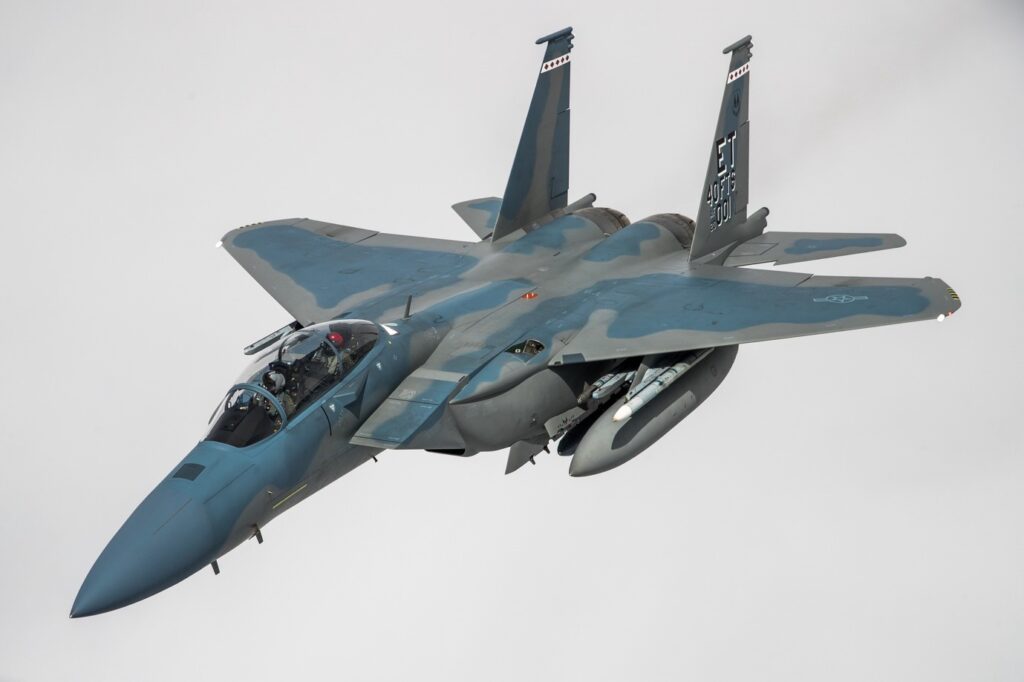
The F-15 Eagle is expected to be in service with the USAF at least until the 2030s with newer models being produced for foreign customers.

